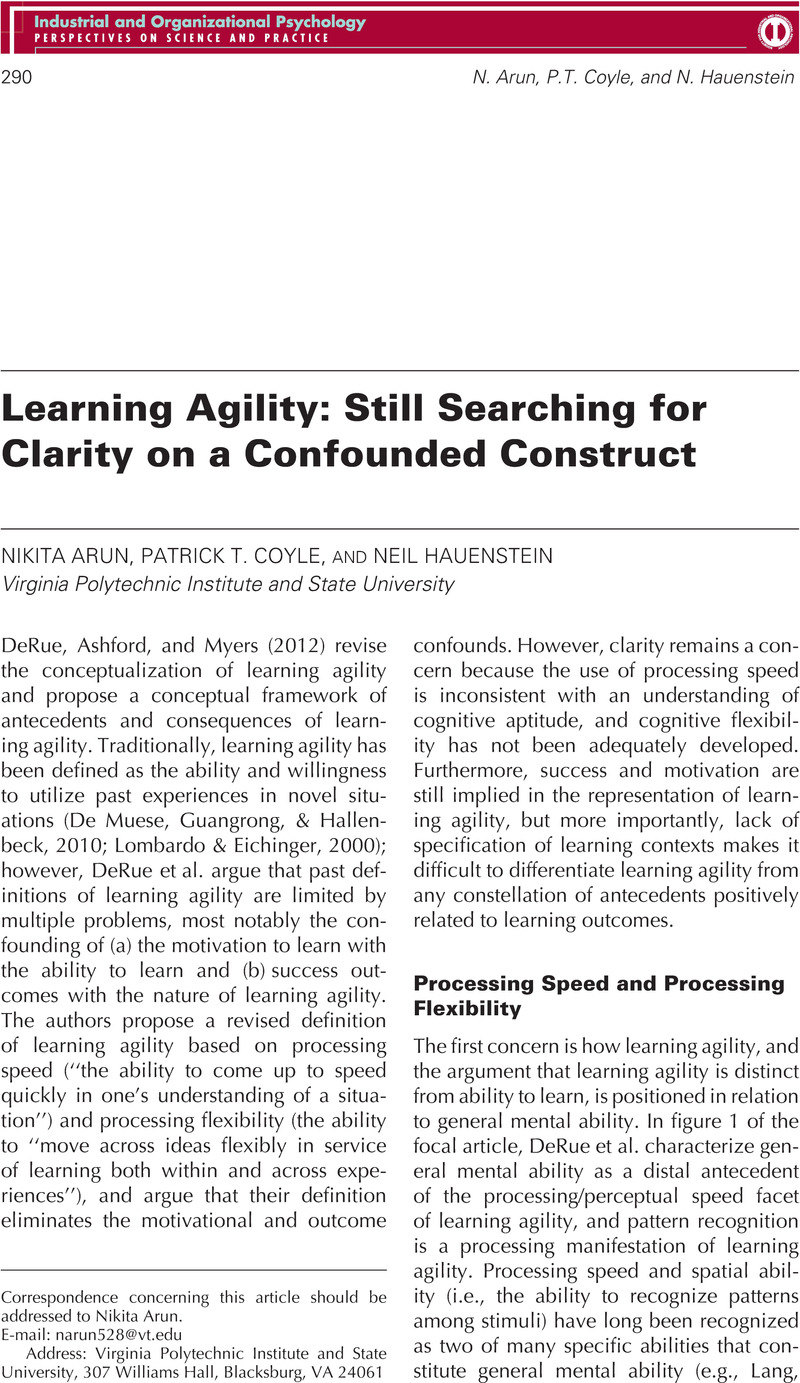Crossref Citations
This article has been cited by the following publications. This list is generated based on data provided by Crossref.
DeRue, D. Scott
Ashford, Susan J.
and
Myers, Christopher G.
2012.
Learning Agility: Many Questions, a Few Answers, and a Path Forward.
Industrial and Organizational Psychology,
Vol. 5,
Issue. 3,
p.
316.
Neubert, Jonas C.
Mainert, Jakob
Kretzschmar, André
and
Greiff, Samuel
2015.
The Assessment of 21st Century Skills in Industrial and Organizational Psychology: Complex and Collaborative Problem Solving.
Industrial and Organizational Psychology,
Vol. 8,
Issue. 2,
p.
238.
류혜현
and
Oh,Hun-Seok
2016.
Learning agility: Issues and Challenges.
The Korean Journal of Human Resource Development Quarterly,
Vol. 18,
Issue. 4,
p.
119.
Rotolo, Christopher T.
Church, Allan H.
Adler, Seymour
Smither, James W.
Colquitt, Alan L.
Shull, Amanda C.
Paul, Karen B.
and
Foster, Garett
2018.
Putting an End to Bad Talent Management: A Call to Action for the Field of Industrial and Organizational Psychology.
Industrial and Organizational Psychology,
Vol. 11,
Issue. 2,
p.
176.
박정열
and
Kim Jin-Mo
2019.
The Development of Workplace Learning Agility Assessment Inventory for Knowledge Workers.
The Korean Journal of Human Resource Development Quarterly,
Vol. 21,
Issue. 4,
p.
115.
Zainal, Asma Y.
Yousuf, Hana
and
Salloum, Said A.
2020.
Proceedings of the International Conference on Artificial Intelligence and Computer Vision (AICV2020).
Vol. 1153,
Issue. ,
p.
762.
Nayak, Lagna
and
Malik, Pooja
2024.
Two decades of learning agility and an integrated framework: a review of literature and bibliometric analysis.
International Journal of Organizational Analysis,
Vol. 32,
Issue. 10,
p.
2549.
Smith, Brandon A.
and
Watkins, Karen E.
2024.
Measuring learning agility: a review and critique of learning agility measures.
Personnel Review,
Vol. 53,
Issue. 3,
p.
704.
Saputra, Nopriadi
and
Jafar, Bayanti Umi
2024.
Uncovering the Impact of Digital Mastery on Learning Agility in Electronics Manufacturing Companies.
p.
1.



